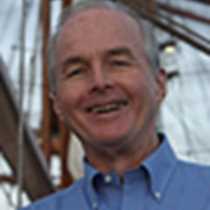O Porto
We arrived in the port of Leixoes at 7am and despite the fact that we turned our clocks back it was still dark. We left the ship and boarded our buses for the short (7 km) ride to Oporto.
This was our first embarkation in Portugal and the first thing that strikes almost everyone is the unique pronunciation of some of the consonants in this Romance language. The guide informed us that we would be visiting Lisbon, pronounced Lizhboa, tomorrow. I have been unable to discover where this rather unique accent has come from. It is possible that such a consonant sound is an influence from the Moors who were here until the 12th century.
Oporto is Portugal’s second largest city and has approximately one million inhabitants. The city straddles the steep banks of the Douro River. We drove our busses through the historic center of the old town (now declared a UNESCO World Heritage Site). Although close to Galicia, Spain in customs and language, the architecture of Portugal, particularly the use of the magnificent tiles which cover the buildings is quite unique. Entire sides of buildings are covered with blue and white and gold tiles which gleamed in the morning sun.
Our first stop was the Cathedral, a largely baroque church, the decorations of which speak volumes about the massive wealth in gold and silver that was pouring into Portugal in the 16th and 17th century. This passion for gilding reached an apogee in the Church of Saint Francis. Here, in addition to the fabulous use of gold and silver leaf, we saw some of the finest wood carving of the entire trip. Entire altars and statues by the dozens were beautiful carved out of chestnut wood.
Alongside the church is the catacombs. We descended into these catacombs and found them surprisingly bright and well lit, nothing like the ancient catacombs of Rome. The tradition of burying clergy and wealthy patrons as near as possible to the church is of great antiquity. Aside from the many graves in the walls there was a single great pit where the bones of the long deceased had been piled femur atop femur. Ossuaries of this sort are not at all uncommon in medieval Europe.
Our next stop was Sandeman’s Port house which sits tight at the end of the Douro River. Some of us chose to walk from the Church of St. Francis and we crossed the Douro on the pedestrian bridge. The guides at Sandeman’s described the tradition of growing and producing Port wine which is truly one of the great exports of Portugal. The wine is fortified with brandy and then aged. A good port wine can last a century and some of the vintages which were for sale (particularly the 1994) would not be ready to drink for another dozen years. The port drinker, in addition to a palate, requires patience!
We returned to the ship for lunch. Laura Fraser gave a writing work shop in the chart room. David Barnes presented a very interesting forum on the European Union. For those of us from the US it provided lots of insights into both the similarities and differences between our respective governments.
At 4pm Ryan and Gabriella Opaz held a wine tasting on the wines of Portugal. It was well attended! Richard Maack put together the slide show which some of the guests contributed to and it was running on the TVs in the lounge until the cocktail party.
The captain’s farewell party was the capstone to a wonderful trip. All good things must come to an end. Safe harbors until we meet again.




